Toulouse, the enchanting “Pink City” of France, is renowned not only for its unique architecture but also for its rich historical tapestry. With magnificent architectural structures, ancient relics, and captivating historical narratives, Toulouse promises unforgettable experiences for visitors. Join us as we explore the most important historical sites, the cultural highlights that define the distinctive identity of this city.
Capitole – The Ancient Heart of Toulouse
The Capitole is the beating heart of Toulouse, a focal point for the most significant historical and cultural landmarks. Here, visitors can admire the majestic beauty of the Capitole building, Capitole Square, and uncover the historical vestiges hidden within this area.
Capitole Building – Capitole Square
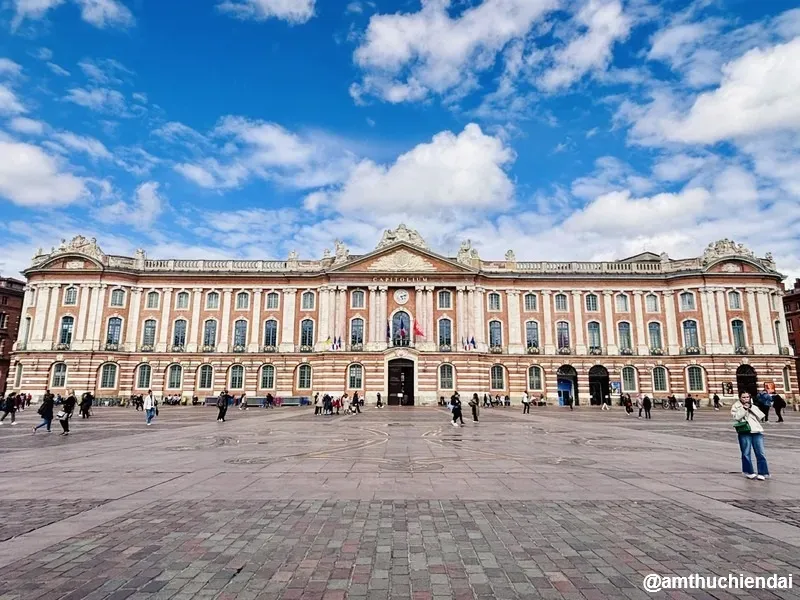
The Capitole building, an emblem of Toulouse, is a colossal architectural masterpiece housing both Toulouse City Hall and the City Theatre. The building’s impressive façade, designed by architect Guillaume Cammas in the late 18th century, presents a unified and harmonious aesthetic.
Stepping inside Toulouse City Hall, visitors will be awestruck by the opulent beauty of the Salle des Illustres, a hall showcasing renowned artworks by master painters and sculptors from 19th-century Toulouse.
Capitole Square, one of France’s most beautiful squares, is a frequent venue for major city events and festivals. Strolling under the Galeries des Arcades, visitors can marvel at the stunning ceiling paintings by artist Raymond Moretti, depicting the rich history of Toulouse.
Jacobins Convent
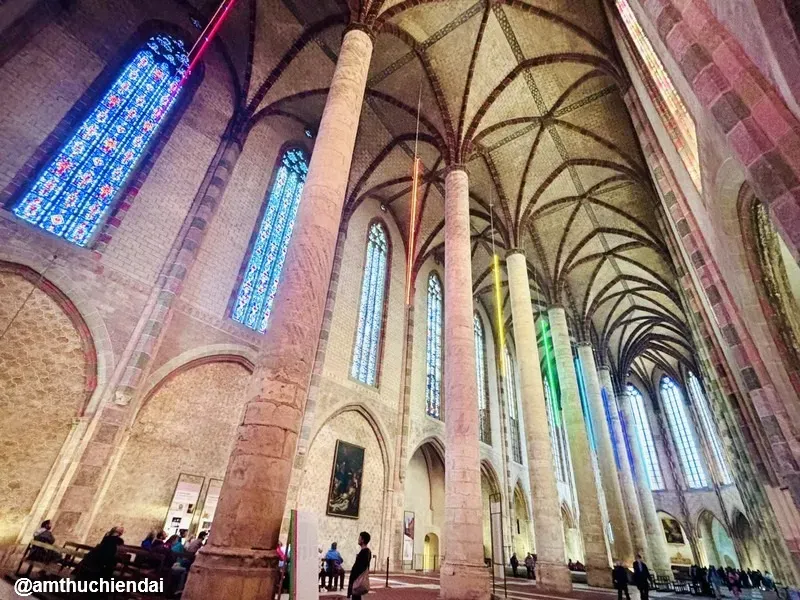
Just a few minutes’ walk from Capitole Square, the Jacobins Convent is another significant historical site in Toulouse. Constructed in the 13th century by the Dominican order, the convent played a crucial role in establishing Toulouse’s first university.
Inside the convent, visitors will be impressed by the grand architecture, colossal pillars soaring like palm trees, Gothic vaults, and vibrant stained-glass windows. The Jacobins Convent also houses the tomb of Saint Thomas Aquinas, one of the great philosophers of the medieval Catholic Church.
Beyond its historical value, the Jacobins Convent is a vibrant cultural center, frequently hosting art exhibitions, concerts, and other cultural events.
Historic Private Mansions
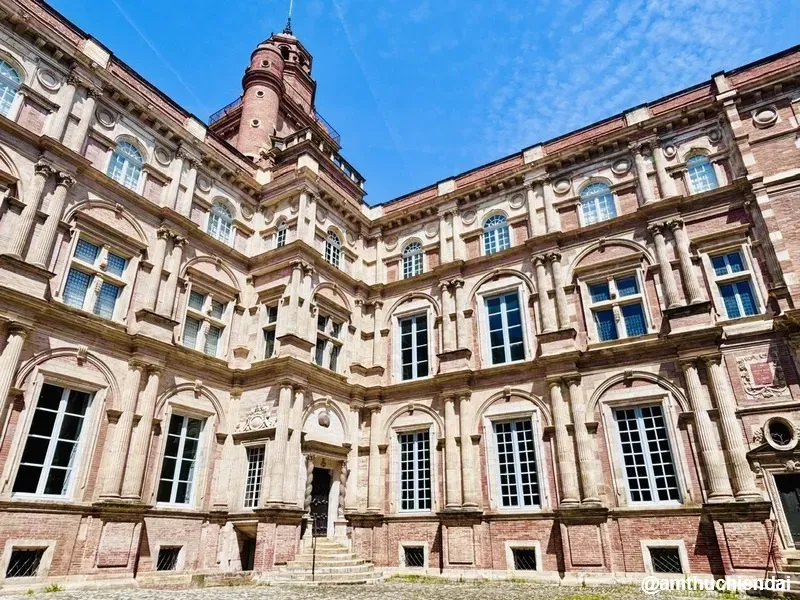
Toulouse once thrived as a wealthy city due to its flourishing trade. In the 14th-16th centuries, the “pastel” trade (blue dye) brought immense wealth to many Toulousians, who built magnificent private mansions known as “Hôtels Particuliers.”
Today, these mansions are an integral part of Toulouse’s architectural heritage. Hôtel d’Assézat, once owned by merchant Pierre D’Assézat, is a prime example of Renaissance architecture in Southern France. This mansion currently houses the Bemberg Foundation and an art museum, exhibiting Europe’s largest private art collection.
Other private mansions such as Hôtel de Bernuy and Hôtel de Nupces are also captivating destinations, offering visitors profound insights into the history and culture of Toulouse.
Strolling Along the Garonne Riverbank
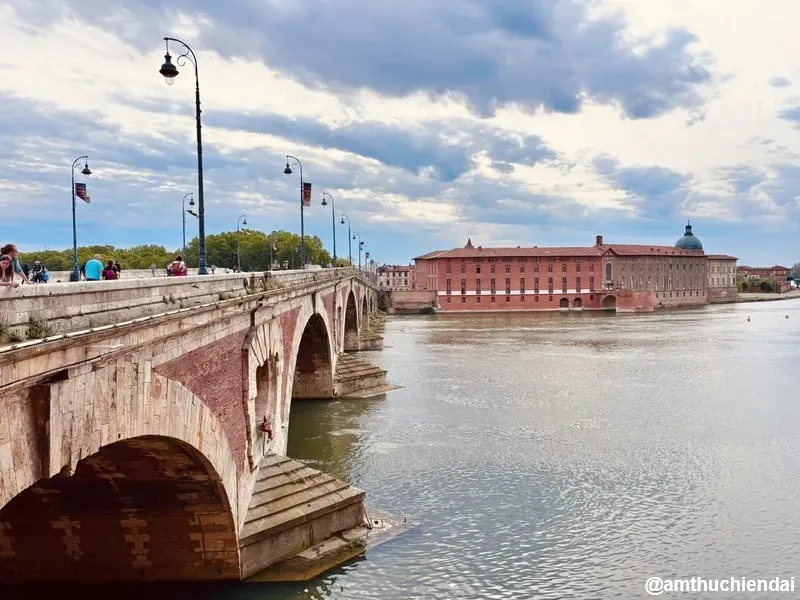
The Garonne River is the “soul” of Toulouse, and the riverside area is a beloved destination for both locals and tourists. Strolling along the riverbank, visitors can admire the ancient Pont Neuf bridge, the UNESCO World Heritage site Hôtel-Dieu Saint-Jacques, and the dome of the Chapelle Saint Joseph de La Grave.
Quai de la Daurade and Place de la Daurade are ideal spots to relax and enjoy the scenery. The Basilique Notre Dame la Daurade, with its replica of the famous Black Madonna statue, is an important spiritual destination.
On pleasant days, the Garonne riverside area becomes vibrant with picnics and recreational activities. It’s also a hub for numerous bars and restaurants popular with young people.
Saint-Sernin – Victor Hugo
Located adjacent to the Capitole center, Saint-Sernin and Victor Hugo are two peaceful areas with prominent historical and cultural sites.
Basilica of Saint-Sernin
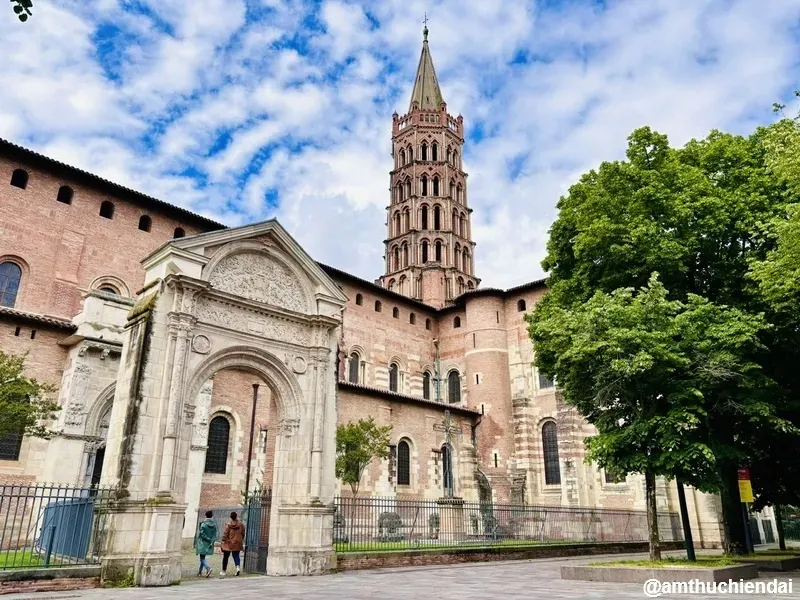
The Basilica of Saint-Sernin, one of Toulouse’s three UNESCO World Heritage sites, is the largest Romanesque building remaining in Europe. This church houses the relics of 128 saints and a thorn believed to be from Christ’s Crown of Thorns.
Along with the ancient Hôtel-Dieu Saint-Jacques hospital, the Basilica of Saint-Sernin holds significant importance on the Santiago de Compostela pilgrimage route.
Victor Hugo Market
Marché Victor Hugo is Toulouse’s largest and most important market, where visitors can find local specialties such as Toulouse sausage, Pavé Toulousain cheese, and foie gras.
The ground floor of the market houses stalls, while the upper floor features on-site restaurants, creating a lively and appealing culinary space.
Conclusion
Toulouse is not only a beautiful city but also a rich treasure trove of history and culture. Important historical sites such as the Capitole, Jacobins Convent, Basilica of Saint-Sernin, and ancient private mansions are must-visit destinations when exploring this city.
Discovering Toulouse allows visitors not only to admire magnificent architectural structures but also to learn about the history, culture, and people of this place, thereby gaining memorable and profound experiences. Don’t forget to savor the distinctive cuisine and explore the vibrant neighborhoods to fully appreciate the beauty of France’s “Pink City.”